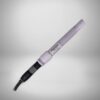
Agriculture weather monitoring is crucial for the success and efficiency of modern farming practices. With climate change affecting weather patterns, it's more important than ever to understand the local weather conditions that impact crops and farming operations. By using advanced monitoring systems, farmers and agricultural operators can gather valuable insights and data that help them make informed decisions about their practices. This is especially important in regions where the weather can significantly affect crop yields and farm operations. By understanding local weather patterns, farmers can make informed decisions that improve their practices and ensure the success of their operations.
For advance forming, it's essential to have an agriculture monitoring system that provides accurate information about your crops. By evaluating your system, you can identify any issues that might impact its effectiveness in providing useful data. One important part of your monitoring system is the weather monitoring component. This provides real-time information about weather conditions that can help you make informed decisions about managing your crops. For example, you can predict the weather, check soil moisture levels, and detect early signs of plant disease or stress.
When you have accurate weather information, you can make better decisions about irrigation, pest control, and fertilizer use. This can help you increase efficiency, productivity, and profitability in your operations. If you notice any deviations during the evaluation process, you can use this information to make improvements to your system, such as repairing or upgrading components or the agriculture management system. Ultimately, the goal is to ensure that you have the best possible tools to manage your crops and improve your operations.
Agriculture monitoring systems aren' t just helpful for farmers, though. Researchers can also benefit from the data collected by these systems. By analyzing the performance of the system, researchers can identify areas for improvement and ensure the accuracy and reliability of the data collected. This data can then be used to develop and test new agricultural technologies and practices, which can lead to increased efficiency and sustainability in the agricultural industry.
Moreover, researchers can work with farmers to conduct on-farm research and trials using data collected from agriculture monitoring systems. This type of research can provide valuable insights into the effectiveness of new technologies and practices in real-world farming conditions.
Overall, agriculture monitoring systems are an important tool for both farmers and researchers in improving agricultural practices and sustainability. By working together and using the data collected from these systems, farmers and researchers can develop and implement new technologies and practices that benefit both the agricultural industry and the environment.


As a farmer or agriculture professional, you know that weather conditions can make or break your crop yields. That's where weather stations come in - they provide real-time data on weather conditions like temperature, humidity, wind speed, and precipitation, giving you the information you need to make informed decisions about crop management.
Weather stations have sensors that measure various weather parameters and transmit that data to a central database. You can then access this data and use it to plan your planting schedules, irrigation timing, and crop protection measures. With accurate and timely weather information, you can optimize your crop yields, reduce water consumption, and minimize the use of pesticides and fertilizers.
The benefits of using weather stations in agriculture are many. You can save costs by reducing resource consumption, and the more sustainable use of resources can help protect the environment. With weather stations, you can make informed decisions that can ultimately help you increase your profitability and sustain the agricultural industry. The main components of weather monitoring systems used in agriculture weather monitoring are given below.

Soil temperature sensors provide real-time info on soil temperature, affecting seed germination, root growth, and crop development. Farmers use this data to make informed planting, watering, fertilizing choices for better crop growth.

Soil moisture sensors optimize watering, increase crop yield and promote healthy plant growth by measuring soil water content. They inform watering schedules, prevent over/under-watering.

Leaf sensors are essential in agriculture monitoring, measuring light and water reaching plant leaves. This data optimizes irrigation and fertilization, resulting in improved crop growth and higher yields.

LUX sensors in agriculture monitoring measure light intensity to optimize plant growth and light exposure, helping farmers to improve crop yield and quality.

PAR sensors in agriculture monitor the Photosynthetically Active Radiation (PAR) levels, measuring the light energy plants use for photosynthesis. This information is crucial for optimizing plant growth and health.

Anemometer in agriculture measures wind speed, and direction. It provides crucial info for crop management such as pesticide application, wind erosion control, and frost protection. Helps optimize operations, and improve crop health, yields.

A Barometric Pressure Sensor measures air pressure in the atmosphere to determine changes in atmospheric pressure and weather patterns.

An ambient temperature sensor measures the temperature surrounding a wind turbine. This information is important in wind energy systems as it can affect the performance and lifespan of the equipment. The sensor helps operators monitor changes and take action to prevent overheating and potential failure.